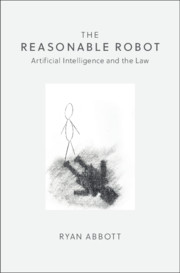Book contents
- The Reasonable Robot
- The Reasonable Robot
- Copyright page
- Dedication
- Contents
- Introduction: Artificial Intelligence and the Law
- 1 Understanding Artificial Intelligence
- 2 Should Artificial Intelligence Pay Taxes?
- 3 Reasonable Robots
- 4 Artificial Inventors
- 5 Everything Is Obvious
- 6 Punishing Artificial Intelligence
- 7 Alternative Perspectives on AI Legal Neutrality
- Third-Party Materials
- Notes
- Index
7 - Alternative Perspectives on AI Legal Neutrality
Published online by Cambridge University Press: 15 June 2020
- The Reasonable Robot
- The Reasonable Robot
- Copyright page
- Dedication
- Contents
- Introduction: Artificial Intelligence and the Law
- 1 Understanding Artificial Intelligence
- 2 Should Artificial Intelligence Pay Taxes?
- 3 Reasonable Robots
- 4 Artificial Inventors
- 5 Everything Is Obvious
- 6 Punishing Artificial Intelligence
- 7 Alternative Perspectives on AI Legal Neutrality
- Third-Party Materials
- Notes
- Index
Summary
This chapter concludes by responding to some of the controversies about artificial intelligence and possible criticisms of AI legal neutrality. It argues that AI legal neutrality is important regardless of whether AI broadly achieves superhuman performance, and that the law would not want to constrain AI development for protectionist reasons. It further argues that AI legal neutrality is a coherent principle for policymakers to apply, even though it allows the law to treat AI and people differently and will sometimes be at odds with other regulatory goals. Finally, it discusses some of the risks and dangers of AI and argues these are susceptible to management with appropriate legal frameworks.
Keywords
- Type
- Chapter
- Information
- The Reasonable RobotArtificial Intelligence and the Law, pp. 134 - 143Publisher: Cambridge University PressPrint publication year: 2020

